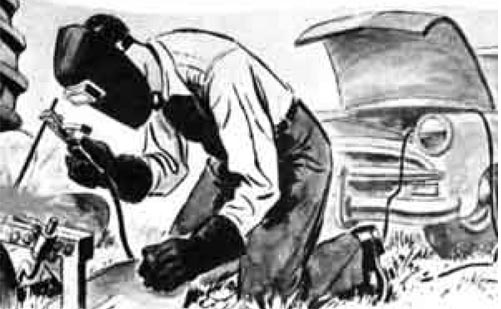From some recent posts and some private emails concerning links that I and others have ut on it becoming more obvious that there isn't a lot of original material left to be found.
The recent threads on taper turning, ball turning, hexagon chuck jaws and large radius turning all lead back to solutions devised years ago by this versatile and very busy guy called Anon.
Now Anon was a busy guy, that busy he didn't have time to sign most of his work but fortunatly it did get recorded.
Looking thru the resurfaced post on vintage farm plans thaat's currently running I found this on taper turning.
No idea how old as the date isn't on the article but guessing pre war or just post war.
I also came across the old trick of ball turning with a flycutter in the mill and a dividing head.
I have often seen this and if I get chance later next week I'm going to set one of these up and get some pics as the diagram doesn't really make it clear.
Here's a sketch from another book of the same method.

John S.
The recent threads on taper turning, ball turning, hexagon chuck jaws and large radius turning all lead back to solutions devised years ago by this versatile and very busy guy called Anon.
Now Anon was a busy guy, that busy he didn't have time to sign most of his work but fortunatly it did get recorded.

Looking thru the resurfaced post on vintage farm plans thaat's currently running I found this on taper turning.
No idea how old as the date isn't on the article but guessing pre war or just post war.
I also came across the old trick of ball turning with a flycutter in the mill and a dividing head.
I have often seen this and if I get chance later next week I'm going to set one of these up and get some pics as the diagram doesn't really make it clear.
Here's a sketch from another book of the same method.

John S.
.png)


Comment